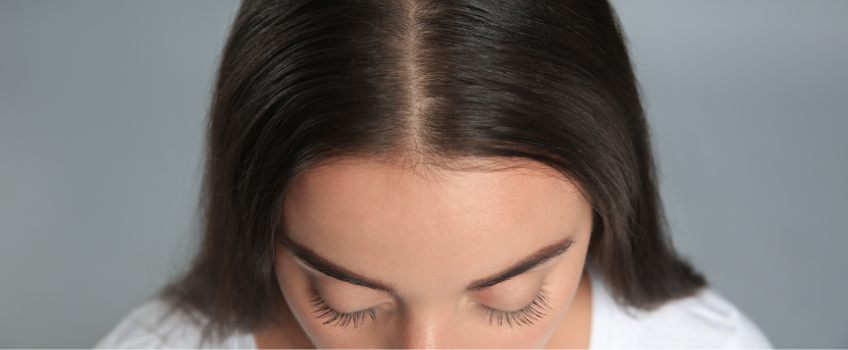
PRP hair therapy is a research-backed, non-invasive and effective treatment choice for those suffering from hair loss or hair thinning.
Without a doubt, hair loss is a distressing problem in a world where physical appearance is everything. While there are various treatments available, Platelet-Rich Plasma (PRP) therapy has emerged as a promising and innovative solution for hair restoration. PRP therapy harnesses the power of blood plasma and platelets to stimulate the scalp and promote hair growth.
It is a minimally research-backed invasive procedure with hardly any downtime, making it an attractive option for people seeking a natural solution. This is with the convenience of returning to work immediately. With PRP treatment, many sufferers of hair loss experience enhanced hair density and stronger hair follicles. More importantly, many experience an enhanced quality of life and restored self-esteem. However, not everyone is considered an ideal candidate for this procedure. In this blog post, we will explore the key factors that make someone an ideal candidate for PRP hair therapy.
1. Mild to Moderate Hair Loss
PRP hair therapy provides the most effective results for early-stage hair loss that is mild to moderate. A person suffering from hair loss or thinning hair may be an excellent candidate for PRP therapy, particularly if they have noticed thinning hair or started experiencing hair loss recently. The procedure promotes hair follicle growth, a healthy scalp environment and strengthens existing hair strands.
This makes PRP hair therapy more likely to succeed when hair loss is still recent. Treating your hair loss while it’s in the initial stages is not only favourable to PRP. In fact, treating hair loss early has been shown to have better results for other hair restoration methods as well, such as minoxidil and finasteride (York et al., 2020). Due to this, PRP hair therapy is recommended for people who have just begun to experience hair loss. The earlier the treatment is started, the better the chances of success.
2. Good Overall Health
As with any medical procedure, PRP hair therapy needs to be carried out in good health. Before undergoing PRP therapy, you need to examine your lifestyle habits and make any required changes. PRP is a type of regenerative medicine, so the quality of your platelets and the number of your platelets matter to a degree. Everybody has a different capacity to heal and regenerate after PRP sessions. If you have any underlying health conditions or take medications that may interfere with your healing, it’s essential to discuss this with the PRP specialists at our plasma clinic.
Additionally, lifestyle habits such as smoking tobacco products and drinking excessive amounts of alcohol can also compromise PRP treatment results. Those considering PRP hair therapy should be able to have effective stress management techniques as stress can also cause enhanced hair loss (Grover & Khurana, 2013). It is imperative to take the necessary steps to ensure your body is in optimal health before undergoing PRP therapy.
3. Realistic Expectations
PRP hair therapy should be approached realistically to achieve the most desired results. While the treatment can stimulate hair growth and improve the appearance of thinning hair, it may not work for everyone or provide a dramatic transformation. Understanding the potential outcomes and discussing your expectations with our plasma clinic will help you set a positive and realistic mindset before the procedure.
Hair PRP therapy can be a great option for those looking for a natural and long-lasting solution to hair loss problems. However, it is worthwhile to remember that results may vary and regular maintenance will be needed to sustain them. The amount of maintenance treatments required varies from individual to individual.
4. Multiple Sessions
PRP hair therapy typically requires multiple sessions to achieve desired results. On average, patients undergo four to six sessions. The length of time between treatment sessions depends on the PRP kit being used. It can vary from four weeks apart to a couple of months apart. However, maintaining a commitment to attending these sessions and following the recommended treatment plan is essential for hair restoration therapy’s overall success.
Conclusion
PRP hair therapy offers a non-surgical, zero downtime and natural approach to hair loss. By identifying the ideal candidates for this treatment, our plasma clinic can ensure better outcomes and higher patient satisfaction. If you are recently experiencing hair loss, are in good general health, and maintain realistic expectations, PRP hair therapy may be the solution to help you reclaim your crowning glory. Remember, each case is unique, and a personalized approach will yield the most beneficial results.
So, take that first step towards rejuvenating your hair and boosting your confidence with PRP hair therapy. To find out if PRP hair therapy is right for you, contact us to arrange a complimentary consult with our plasma clinic and make an appointment for an evaluation of your scalp. You can also research the procedure and the potential risks and rewards. Finally, utilize experienced and certified professionals for your PRP hair treatments.
References
Grover, C., & Khurana, A. (2013). Telogen effluvium. Indian Journal of Dermatology, Venereology and Leprology, 79, 591.
York, K., Meah, N., Bhoyrul, B., & Sinclair, R. (2020). A review of the treatment of male pattern hair loss. Expert Opinion on Pharmacotherapy, 21(5), 603–612.
To book your complimentary consultation appointment, call us at 416-548-6548 Book a Consultation
